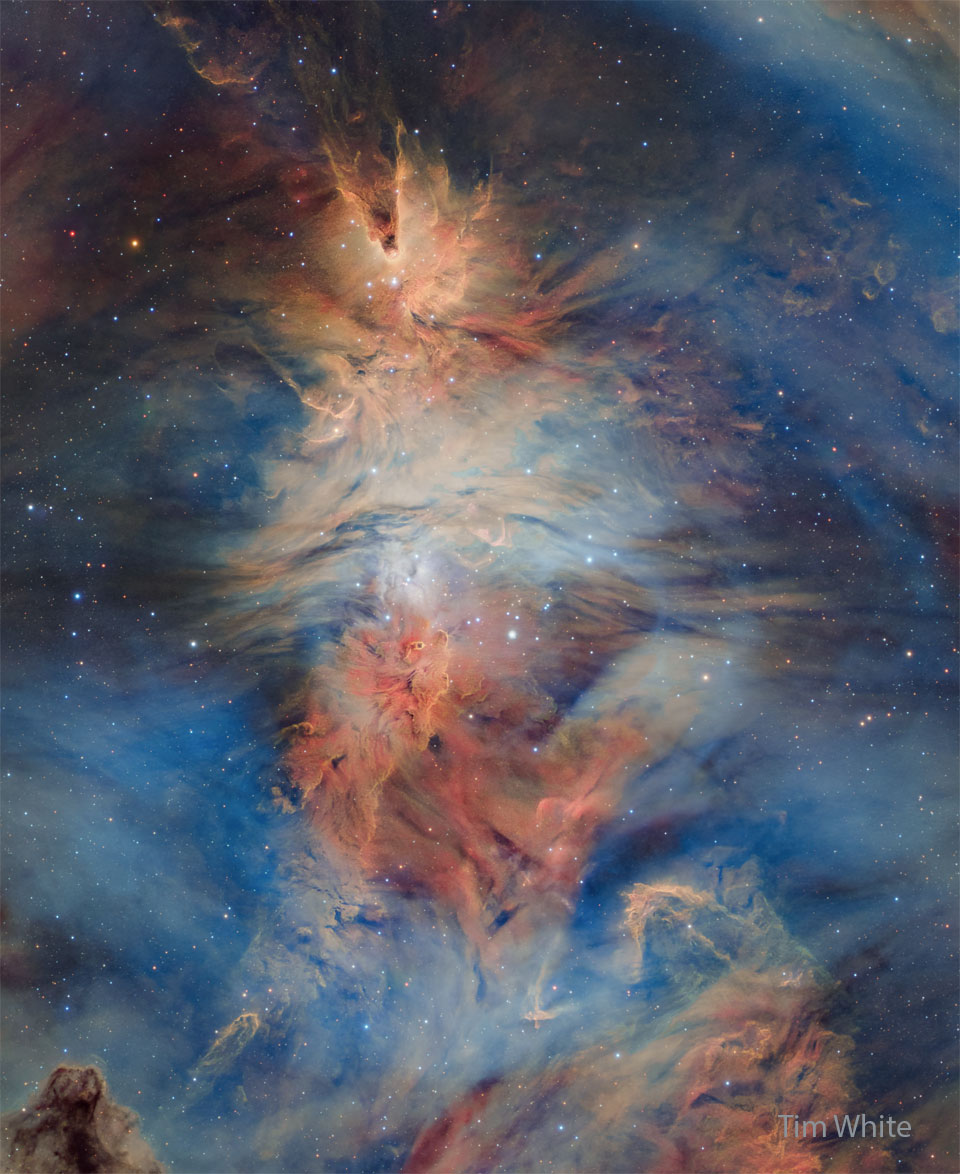
Nombre total de pages vues
17/03/2024
SANTé/MEDECINE - IRM montrant des yeux globuleux

SANTé/MEDECINE - Cancer du sein : attention à ces 5 symptômes - Une peau squameuse et sèche autour du mamelon

ASTRONOMY - NGC 7714: Starburst after Galaxy Collision
2024 March 17
Image Credit: NASA, ESA, Hubble Legacy Archive;
Processing & Copyright: Rudy Pohl
Explanation: Is this galaxy jumping through a giant ring of stars? Probably not. Although the precise dynamics behind the featured image is yet unclear, what is clear is that the pictured galaxy, NGC 7714, has been stretched and distorted by a recent collision with a neighboring galaxy. This smaller neighbor, NGC 7715, situated off to the left of the frame, is thought to have charged right through NGC 7714. Observations indicate that the golden ring pictured is composed of millions of older Sun-like stars that are likely co-moving with the interior bluer stars. In contrast, the bright center of NGC 7714 appears to be undergoing a burst of new star formation. The featured image was captured by the Hubble Space Telescope. NGC 7714 is located about 130 million light years away toward the constellation of the Two Fish (Pisces). The interactions between these galaxies likely started about 150 million years ago and should continue for several hundred million years more, after which a single central galaxy may result.
16/03/2024
SANTé/MEDECINE - La résonance magnétique révèle les vaisseaux du cerveau

SANTé/MEDECINE - HISTOIRE - L'autopsie du corps humain durant la Renaissance
ASTRONOMY - ELT and the Milky Way
2024 March 16
Image Credit & License: European Southern Observatory - Courtesy: Jens Scheidtmann
Explanation: The southern winter Milky Way sprawls across this night skyscape. Looking due south, the webcam view was recorded near local midnight on March 11 in dry, dark skies over the central Chilean Atacama desert. Seen below the graceful arc of diffuse starlight are satellite galaxies of the mighty Milky Way, also known as the Large and Small Magellanic clouds. In the foreground is the site of the European Southern Observatory's 40-metre-class Extremely Large Telescope (ELT). Under construction at the 3000 metre summit of Cerro Armazones, the ELT is on track to become planet Earth's biggest Eye on the Sky.
15/03/2024
SANTé/MEDECINE - Cancer du sein : attention à ces 5 symptômes - Une inversion du mamelon (2/5)

ASTRONOMY - Portrait of NGC 1055
2024 March 15
Image Credit & Copyright: Dave Doctor
Explanation: Big, beautiful spiral galaxy NGC 1055 is a dominant member of a small galaxy group a mere 60 million light-years away toward the aquatically intimidating constellation Cetus. Seen edge-on, the island universe spans over 100,000 light-years, a little larger than our own Milky Way galaxy. The colorful, spiky stars decorating this cosmic portrait of NGC 1055 are in the foreground, well within the Milky Way. But the telltale pinkish star forming regions are scattered through winding dust lanes along the distant galaxy's thin disk. With a smattering of even more distant background galaxies, the deep image also reveals a boxy halo that extends far above and below the central bulge and disk of NGC 1055. The halo itself is laced with faint, narrow structures, and could represent the mixed and spread out debris from a satellite galaxy disrupted by the larger spiral some 10 billion years ago.
14/03/2024
SANTé/MEDECINE - Cancer du sein : attention à ces 5 symptômes - Un sein rouge et gonflé, chaud au toucher (1/5)

ASTRONOMY - Moon Pi and Mountain Shadow
2024 March 14
Image Credit & Copyright: Daniel Lopez (El Cielo de Canarias)
Explanation: What phase of the Moon is 3.14 radians from the Sun? The Full Moon, of course. Even though the Moon might look full for several days, the Moon is truly at its full phase when it is Pi radians (aka 180 degrees) from the Sun in ecliptic longitude. That's opposite the Sun in planet Earth's sky. Rising as the Sun set on March 9, 2020, only an hour or so after the moment of its full phase, this orange tinted and slightly flattened Moon still looked full. It was photographed opposite the setting Sun from Teide National Park on the Canary Island of Tenerife. Also opposite the setting Sun, seen from near the Teide volcano peak about 3,500 meters above sea level, is the mountain's rising triangular shadow extending into Earth's dense atmosphere. Below the distant ridge line on the left are the white telescope domes of Teide Observatory. Again Pi radians from the Sun, on March 25 the Full Moon will dim slightly as it glides through Earth's outer shadow in a penumbral lunar eclipse.
ASTRONOMY - Fox Fur, Cone, and Christmas Tree
2024 December 24 Fox Fur, Cone, and Christmas Tree Image Credit & Copyright: Tim White Explanation: What do the following things have...

-
2021 May 11 Lightning and Orion Beyond Uluru Image Credit & Copyright: Park Liu Explanation: What's happening behind Uluru? A Un...
-
Extraordinary Solar Halos Image Credit & Copyright : Magnus Edback Explanation: Welcome to the December Solstice, the first...




